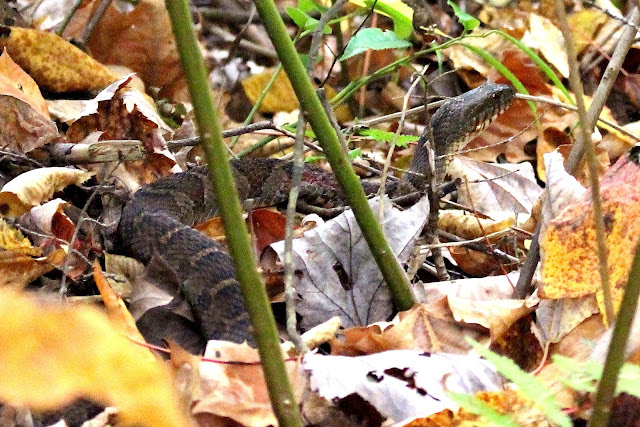 |
| Oak, beech, and blueberry dominate the colors in late October |
The bright reds and yellows of the maples are mostly gone, laying on the ground in various stages of decline; now is the time for the oaks, the beech, and the aspen to take center stage.
 |
| Beech trees glow in the lower levels of the forest |
 |
| Aspen leaves preparing to make next summers fertilizer |
The trees weren't alone in making changes while we were away. The beaver were also busy constructing large piles of debris along the shore of the lake.
 |
| Multiple piles of beaver debris along the shoreline |
These piles are large enough that I wonder if someone is staking out this territory for a new lodge. After a year or two in their parents dwelling, the young are banished from the lodge and must find a home for themselves.
Last week I mentioned hickory trees we saw in Tennessee. On our last few days in North Carolina we saw another interesting tree that I haven't seen in New England, though it it does grow in this region: the Mountain Ash. They had large bunches of beautiful red berries that stood out against the bare branches and blue sky.
 |
| Mountain Ash in the Smoky Mountains |
In the southern Appalachian mountains they grow only above 5000' elevation, sometime alone among the spruce as above, sometimes in large homogeneous stands.
 |
| A stand of Mountain Ash above 5000' on Mt. Mitchell, North Carlolina |
It's time to enjoy the last vestiges of autumn; the drab gray of November will be here soon.














































